Sydney on Foot: The Three Bridges Walk
Now like you, I am prone to exaggerate sometimes. So when I first saw a remark made by the Surgeon-General of the recently declared colony of New South Wales, one John White, on 26 January, 1788, that “Port Jackson, I believe to be, without exception, the finest and most extensive harbour in the universe...” my immediate thought was “Oh yeah!” “The southern hemisphere” would have been a big call, “the world,” huge, but the “universe,” before aeroplanes and satellites, come on!
But then I travelled and saw some of the competitors, Rio de Janeiro, Vancouver, Hong Kong, and lived for a time in Cape Town, and I thought indeed, Master White was prescient. The years have, arguably, proved him right. With its fingers and harbour reaches, Port Jackson, White enthused, “can afford sufficient anchorage for all the navies of Europe,” no small boast given the then size of European fleets. And today’s accommodation of flotillas of sizeable yachts, at the bottom of thousands of gardens, shows that again he was right.
I have spent much time in Sydney, yet explored it little, so when a former diplomat colleague over lunch talked about the great walks that the harbour had to offer, I readily accepted his offer to go on one. “There is the iconic Seven Bridges walk, a distance of about fifteen kilometres around the foreshore of the inner harbour.” Then he looked at me, “Hmmm, let’s start with Three bridges walk, slay the big one, the Sydney Harbour Bridge, first of all. Stop for a coffee half way, have lunch in one of the great pubs in Balmain, and catch a ferry back to near where we started; a nice and scenic stroll.” We met the following Wednesday.
Construction on ‘The Bridge’ began in 1924 and was completed in 1932, an event marked by a Right-Wing fanatic, a former Hussar, one Captain de Groot, slicing the ceremonial ribbon with a ceremonial sword “in the name of decent people,” just as the divisive State Premier, Jack Lang, reached for the golden scissors. Confusion, anger, De Groot pulled from his horse, arrested and taken to an asylum for the insane, 300,000 people required to wait for Take Two, while the ribbon was retied.
When it was completed, it was the largest steel arch in the world (Newcastle on Tyne in the UK has a smaller but similar structure, completed in 1928), and to test its strength, 96 heavy locomotives were placed on its deck. Thousands of homes were raised to make way for its highway approaches. It is 503 metres in length, has a height of 134 metres, is 49 metres wide and 49 metres above the water, allowing entry to the inner port by most ships. It contains 6 million rivets and when they finish painting it, they start the process again. Its most famous rigger is Paul Hogan, old Crocodile Dundee himself, and now the public can undertake a bridge climb themselves after parting with a fist full of dollars. It has seen its share of suicides and miraculous survival, base-jumpers fleeing into the night in speed boats. Planes have flown under it and thousands turned up to see a jumbo go under it (Qantas obligingly flew one of theirs nearby) only to be fooled by some circus PR when an elephant towed on a barge, doing the job. Well, it was 1 April.
The walk begins at the Milson’s Point end, footsteps clanging on the steel walkway to make your way on to the bridge proper, past one of the four solid grey granite pylons and an equally solid security guard, a sentry against jumpers, although the ‘turned back’ grill on both sides of the walkway would deter even hardened criminals. And like a criminal, between the bars, you get a vista of Sydney’s glorious harbour, the Opera House, the city and beyond, its highly prized and priced, nestled suburbia. Ferries dash below you like dragonflies and even the lumbering Manly ferry exhibits a manner of grace. And if you are lucky, a great white cruise ship lies tethered to the pier at the International Terminal, ready to whisk the glitterati off on a South Pacific cruise. The walk across to Miller’s Point, the Southern end of the bridge takes, at “photographer’s pace,” fifteen minutes amid the rumble (and tremble) of vehicles and trains.

And even though you have to look through the girders and iron-work, the view is simply magic.

Oh there are joggers aplenty on the Bridge, but in the main they are saunterers, often with an abundance of photographic equipment slung on the belly like the landing gear of the aircraft that brought them. Many of them Chinese, who increasingly boost Australia’s tourist numbers, particularly for Sydney, and now arrive in greater numbers than any of our Asian neighbours.
“The Rocks,” under the wing of the Bridge, is probably as close as you get to old colonial in Australia, with many buildings dating from the early Nineteenth Century. It was right beside the Quay, the landing point of the new colony’s sustenance and the seat, such as it was, of government, and for the security of the transported convicts. So it was a place of storehouses, Georgian workers cottages, a grain mill, a signal station to flag when ships from home, and hostile, approached the distant Harbour heads. And of course, there were soon ale houses and debauchery and its reputation for ‘good times’ was born, one that it retains to this day, especially on New Year’s eve and the dazzling fireworks displays from the Bridge and around the harbour. The convicts were kept busy quarrying the Argyle Cut, a huge chasm cut out of unforgiving granite which now is always full of cars seeking to cross the Bridge despite a tunnel now providing a much used, though less attractive passage.
Today the Rocks is in part a tourist haven, the plain row houses full of pitcher-plant type shops where once you enter, you are trapped. There is a Heritage centre, aboriginal art galleries, an excellent Visitor Centre, lots old stores with barred windows from the old days, cobbled courtyards and of course drinking places and coffee shoppes! There is too a rather out of place German beer bar, with buxom girls in dirndls and chaps in lederhosen with feathered caps, which seems to cater more to foreigners. Australians, as inveterate travellers and lovers of the amber fluid, found what the beer halls of Munich are really all about, oompapa and all, and this ain’t it! No, do yourself a favour and go to the Glenmore Hotel and have a “quiet one” at the laid back rooftop bar with a stupendous view of the inner Quay and the Opera House. The pub food and the lattes are excellent.
Indeed, all the pubs in the Rocks, once charnel houses for the working man, tiled almost to the ceiling so that it was easy to hose out the blood and the chunder before the next day’s trading, are now often swank gastro-pubs -as in gastronomic, rather than gastro-enteritis. “So that is Duck terrine with truffle oil, courgettes, honeyed petite carrots Vichy, caramelised onions and bottle of the Tulloch’s 2011 Sauvignon Blanc, is it mate?” Gone,thank goodness, are the days of “Toohey’s or Resch’s, mate?” when pubs meant beer. They only served wine, or “plonk,” as it was called, Sherry, Shandy, or Portagaff (stout and lemonade) “for Mum,” in the “Ladies Lounge” out the back.
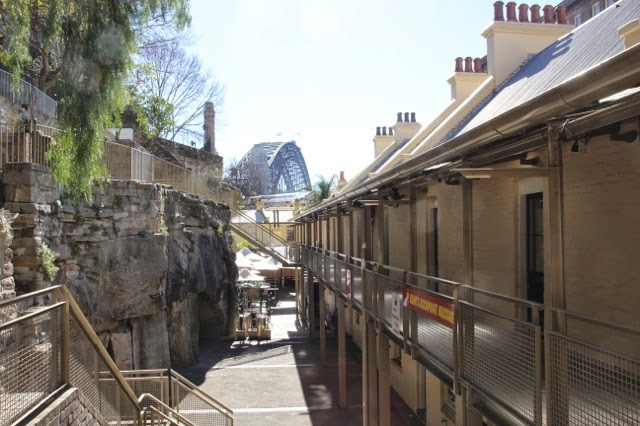
Two hotels lay claim to be the oldest pub in Sydney: the Hero of Waterloo and the Lord Nelson, both heroes of the Napoleonic era. I digress, but a very young Corsican, Napoleon Bonaparte, once sought a place on the French explorer, Compte La Perouse's voyage of discovery to the Great South Land but was overlooked. La Perouse arrived to claim Australia for France, but was just a day too late. Captain Arthur Phillip had already claimed it for Great Britain. After exchanging pleasantries, La Perouse and his ship sailed for “Oceania,” and were never seen again. How history might have changed, had Nappy got his passage.

Before us, an intrepid group of over the top explorers were all hoots and giggles. They had come from climbing the Bridge, got the Tee Shirt, and were off to tell everyone that they had assailed the monster. Well done indeed, but not for me, no matter that you are wired up with a safety cable and that hundreds of thousands of ordinary and famous people have done the climb. It was the brain-child of a Sydney man who fought the bureaucracy for nearly a decade, working his way through one official objection after another, and then paid millions for the sole rights to do so. Not a tourist ever lost or fallen and a few years later, he sold the rights for squillions. The new operator is now mining, so to speak, the rich vein.

Starting at $A240 pp, (more for twilight and dawn climbs, slightly less for a night climb) it is one of Sydney’s greatattractions for the non-vertiginous, whether a plodder or an athlete.

We followed the road around Miller’s Point where once a punt crossed the water point to point, from Miller’s to Milson’s, and wandered in to the more residential side of the Rocks, the humble row houses now the site of a huge stink. The State Government, seeing the commercial benefits of ‘relocating’ the current low cost dwellers (many on Government welfare) and selling the plots to eager developers, are facing an angry backlash. Indeed, years ago, similar attempts in the Eastern Rocks area, failed in the face of huge protests and people are today grateful that the old has been preserved, that the waterfront area has not become “just another Hong Kong or Singapore.” Watch this space.

Whole areas of the Rocks were raised in the early 19th century because of an outbreak of the plague. The rebuilt housing style remains distinctly “English.” There are some small parks, usually around giant Morton Bay fig trees, which stand oak-like and must have given convicts, most who never left New South Wales, a “touch of home” feeling. From the vantage point of the Rocks, all that they would have seen was the harbour and the seemingly impenetrable bush, full of at times, “hostile” aboriginals, and full of “dangerous” animals. Oh sorry must have been their plight. In the last forty or fifty years, “convict ancestry” has become “fashionable” after all, most people firmly believe that crusty shibboleth about most convicts being transported for “stealing a loaf of bread.” It is written large in our folklore!
We followed our nose - there were coffee shops aplenty - to the completely made over Darling Harbour – once railway marshalling yards to serve Sydney’s markets and the export of produce to Mother England, nowa tourist haven par excellence, with museums, aquarium, galleries, shops and restaurants. Oh, and a Las Vegas style casino with the accompanying theatre, tables, and ‘service’ industries. Once a largely dead and ugly part of town, it is now re-inventing itself again through flash, multi-story, inner-city residential towers, with apartments kicking in with off-the-plan at a minimum of six zeros behind the prime number. And served by a short but delightful ferry trip under the bridge, or light rail connection from the down-town business area.
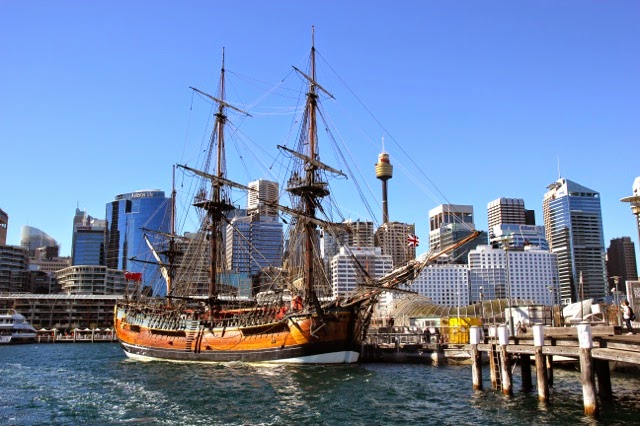

We crossed the old Pyrmont swing bridge, which once allowed the entry of colliers, small ships and lighters into an inner harbour, its little cupola ‘watch box’ looking like something that had been taken from a Noddy picture book. Somehow the wrought iron sides reminded me of the Pont des Artes in Paris, now weighed down by a zillion ‘love locks,’ and I hoped the habit wouldn’t catch on here as the old bridge would die of a broken part, with all that extra weight aboard.
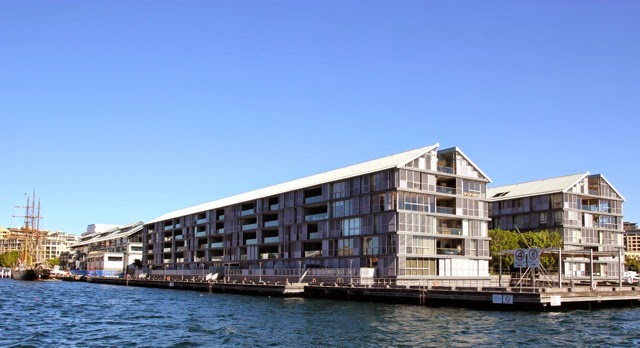
Many of the old Finger wharves, once sheds full of goods, darkness, dust, the noise of forklifts and the curses of barrowmen with heavy luggage, have been converted into a series of swank waterfront apartments with the power boat in the nearby pen, and the delights of Darling Harbour or the Star casino, a short walk away. And everywhere there are coffee shops with more gateau for the bateau or the harbour side chateau,avant or apres le diner.
The walk is now along coves fronted with expensive, ultra-modernreal estate, apartments with large verandahs to take in the sweeping harbour views, although the grassland parks almost to the water’s edge, mean that freebooters, romantics and picnickers alike, can enjoy almost the same views for free. I had a coffee and headed for the ANZAC Bridge.
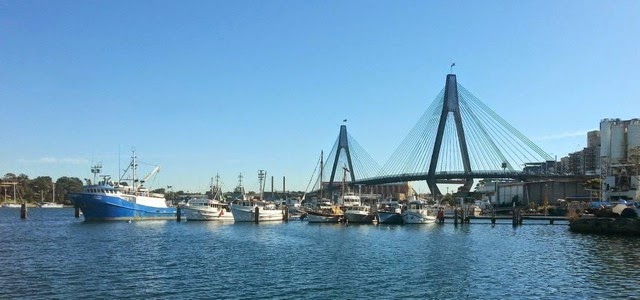
The term ANZAC was a reference to the Australian New Zealand Army Corps which landed at Gallipoli on 25 April 1915 to fight the Turks and the ANZAC Spirit, to “stand by your mates,” is now firmly part of Australian folklore. The bridge is an 8 lane, cable stayed bridge, completed in 1995 and it plays a major role in moving Sydney’s traffic into and out of the Western Suburbs. Bronze statues of an Australian “digger,” in slouch hat, of course, and a New Zealand soldier, also in uniform, stand as sentinels, looking West and the flags of each country fly from the separate pylons. A bike path and a pedestrian footpath make for an easy and scenic crossing, good views of Sydney’s CBD looking East, and a great view of the ANZAC bridge from the nearby always busy, Fish Markets.
We crossed the bridge and headed for Balmain, formerly a C19 industrial area, particularly for shipbuilding and ancillary industries. There followed lots of small workers cottages, and a mushrooming of pubs. Immigrant workers settled there after WW2, enhancing the area’s ‘rough-house’ reputation. It is also the birthplace of the Australian Labor Party in 1891, the Party that post-war spawned, Chifley, Whitlam, Hawke, Keating, Rudd and Gillard. A New South Wales Premier once told a Royal Commission into corruption and political deals, “Balmain boys don’t cry,” but PM Keating chided its gentrification in the 60’s by referring to “The basket weavers of Balmain.”

Today it is decidedly trendy with restaurants a plenty, also bookshops, boutiques, boulangeries and those workmen’s cottages selling for lots of pretty pennies. We found a pub off dapper Darling Street, bypassed the Thai and Spanish fare, and I ordered an old fashioned, “worker’s steak and chips.” Somehow it seemed appropriate and hearty although the pale ale was decidedly ‘boutique.’
Three bridges down, four more to go ... next time! We wandered down to the East Balmain pier where breeze blew lightly and the city and waves sparkled. There is nothing like a ferry ride back, the bows dancing, the tang of waves and salt sea air, with just a whiff of diesel fumes, feet at rest, just the eyes working overtime. We headed for Milson’s Point and Luna Park, the kid in me suggesting a ride on the dodgems, the adult over-riding, ‘You bloody idiot,’ No! The loop had been walked, the pleasures complete, now just the bus ride “home” with plenty of time for what Wordsworth called “in vacant or in pensive mood,” the glorious recall by one’s “inner eye” ... “which is the bliss of solitude.”
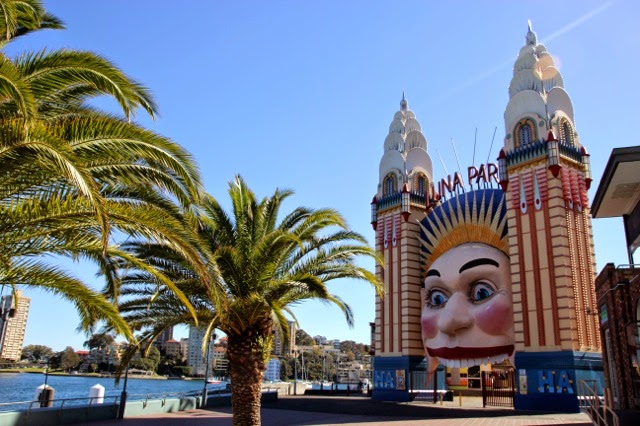
Sydney is bestowed with so many wonderful walking treats around its harbour and coastline, for those prepared to take Shank’s Pony, and with time to stop, ‘smell the roses’ or the coffee, and suck in the sights. Undoubtedly, we all want to live here ... if only it wasn’t so bloody expensive!

Winfred Peppinck is the Tales of the Traveling Editor for Wandering Educators
All photos courtesy and copyright Winfred Peppinck
-

- Log in to post comments

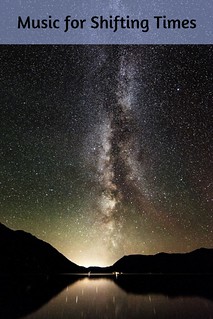
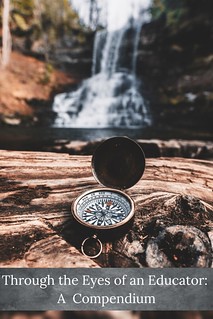
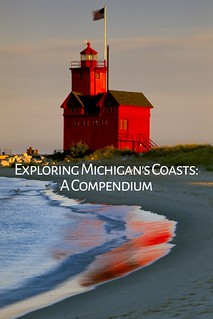

















Terry at Overni...
I love walking cities, and I walked a lot when I visited Sydney a while back. But I somehow missed the Three Bridges Walk. You made it sound terrific. Next time!